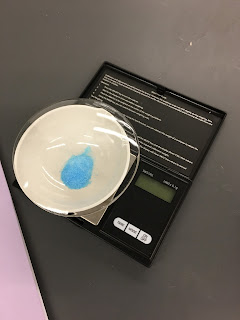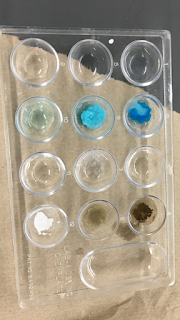Lab 16: Specific Heat of a Metal

I. Introduction: The purpose of this lab was to identify an unknown metal by determining its specific heat. To find the unknown metal, we first put the metal block in water and put it on a hot plate. Once the water boiled, we took the metal out and placed it into a cup of cold water. We measured the temperature change of the metal indirectly by using the coffee cup and the water. After we recorded the data, we calculated the heat gained by the water and then. Using the heat gained and the data collected, we calculated the specific heat of the metal. Finally, we compared our calculated specific heat to a table of metals and their specific heats and found what our metal was. II. Data: III.Calculations: IV. Picture of Setup: V: Specific Heat and Identification: The specific heat of our metal was 378.9 J/kgC. The closest metal to this specific heat was brass so we identified our metal as ...












